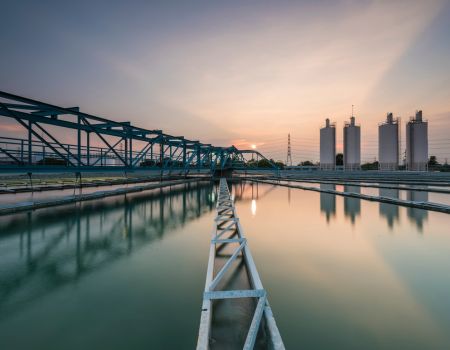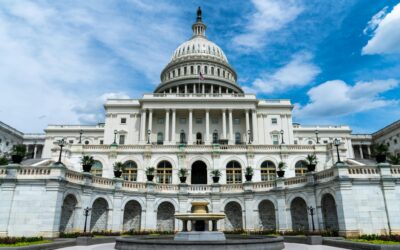Water infrastructure and water purity are a top focus for government leaders throughout America. Across the country, cities and counties are investing in large-scale water and wastewater infrastructure upgrades to modernize systems, comply with tightening environmental regulations, and meet rising demand. With construction timelines ranging from late 2025 through 2028, the projects detailed below represent not only essential public works improvements but also significant opportunities for engineering, construction, and environmental firms to engage in long-term infrastructure development.
Officials in Stillwater, Oklahoma will soon launch a $210 million Water Master Plan to address the city’s aging water infrastructure, the city’s most significant investment in water systems in over 40 years. The objective will be to improve water quality for citizens and increase supply reliability. The city’s water treatment plant, once expanded, will boost capacity from 18 million to 24 million gallons per day. The plan includes the construction of a new seven-mile pipeline to link Stillwater to Lake McMurtry so that the city has a much-needed secondary water source. A new lime system will also be installed to soften the water, adjust pH levels to protect pipes from corrosion, and remove heavy metals. Construction is expected to begin in 2026, and solicitation documents will be released as soon as the planning and design phase is completed.
The Cape Fear Public Utility Authority (CFPUA) will oversee a transformative $400 million project to replace and expand the aging Southside Wastewater Treatment Plant in Wilmington, North Carolina. The project, the largest capital investment in CFPUA’s history, will be designed to modernize the water infrastructure and accommodate the region’s growing wastewater treatment needs. Currently the Southside plant delivers approximately 12 million gallons per day (MGD) of wastewater. The new facility will increase capacity to 16 MGD which is necessary to support the anticipated growth in the region. Beyond capacity enhancements, the project will call for advanced treatment technologies such as a biological nutrient removal system that uses microbial processes to reduce contaminants. The effort will enhance wastewater treatment efficiency, support water resources to enhance regional development, and safeguard environmental quality. Sitework is anticipated to begin in late 2025 or early 2026 after completion of the design phase.
City leaders in Le Mars, Iowa recently approved a significant $155 million wastewater treatment plant expansion to address the community’s growing residential and industrial wastewater demands. As one of the largest infrastructure investments in the city’s history, the project is designed to modernize and expand the city’s capacity to treat wastewater efficiently, sustainably, and deliver compliance for all new environmental standards. Key components of the project will include construction of a new lift station and an anaerobic pretreatment facility to process high-strength industrial waste. A large biosolids lagoon will also be a part of the effort so that the handling and stabilization of waste byproducts is more efficient. The existing industrial treatment plant will be upgraded, which will allow the city to demolish much of its aging second facility and streamline operations. Solicitation documents are anticipated by late 2025, with construction slated for early 2026.
A $30 million water line replacement project has been announced by the Jacksonville, Illinois City Council. It will be designed to modernize the city’s water infrastructure and deliver purer water throughout the city. Financial support will include loans from the Illinois Environmental Protection Agency. Preliminary efforts are underway to identify the existing service lines that need to be replaced, and facilities such as daycare centers and schools will be prioritized. Pending final approval, bidding and construction could begin as early as fall 2025.
Residents of Trousdale County, Tennessee, can expect significant upgrades to their local water infrastructure with the development of a new state-of-the-art water treatment plant. The effort will be designed to address aging water infrastructure and a significant water loss problem. Financed by a $20 million investment from combined federal and state funding sources, the project will initiate with the planning and design of the facility, the extension of water lines, and critical repairs to existing community water tanks. Designed to intake raw water from the Cumberland River for residential use, the new facility will likely include a filtered intake system, pretreatment systems, modern filtration and disinfection systems, and new pumping stations. Other project components may include laboratory, administrative and support facilities as well.
Currently in the design phase, the project could possibly include a pilot program to prove environmental impact. That decision has not yet been made. A construction timeline will be available after designs are finalized.
City leaders in Norman, Oklahoma are advancing plans for a $20 million groundwater treatment facility to improve water quality and meet regulatory requirements. The objective is to deliver a facility that meets regulatory compliance and improves water quality. It will be designed to eliminate disinfectant residuals and emerging contaminants such as arsenic, chromium, and lithium. The new treatment facility, located on a 28-acre city-owned site, will treat disinfectant residuals in the water distribution system and remove harmful contaminants such as arsenic, chromium, and lithium.
The facility design includes a centralized process building with lab space, chemical storage, dosing systems, on-site sewer disposal infrastructure, stormwater detention, and integrated rain gardens. The project is currently in the zoning and permitting phase, with final design and contractor procurement to follow. Construction is expected to begin in 2026.
The infrastructure projects outlined here showcase the growing urgency—and opportunity—surrounding water and wastewater systems across the United States. Aging infrastructure, stricter environmental standards, and rising population demands are converging to drive historic levels of investment. For public sector partners and private contractors alike, the coming years represent a critical time to contribute expertise, innovation, and leadership to ensure these projects deliver long-term value for communities nationwide.







